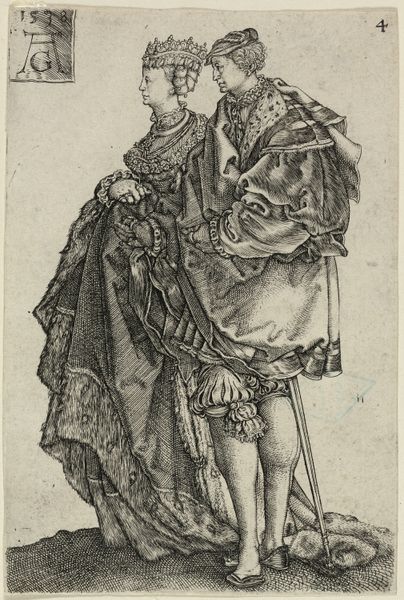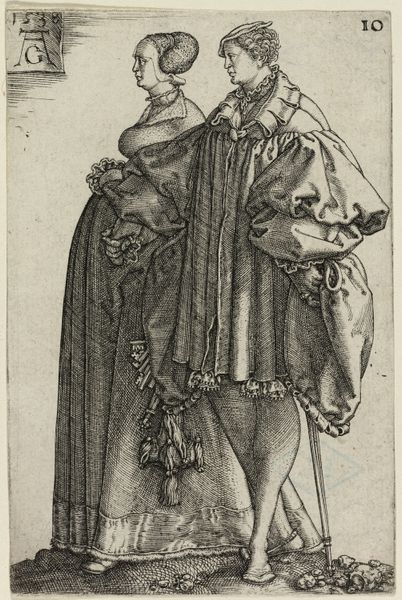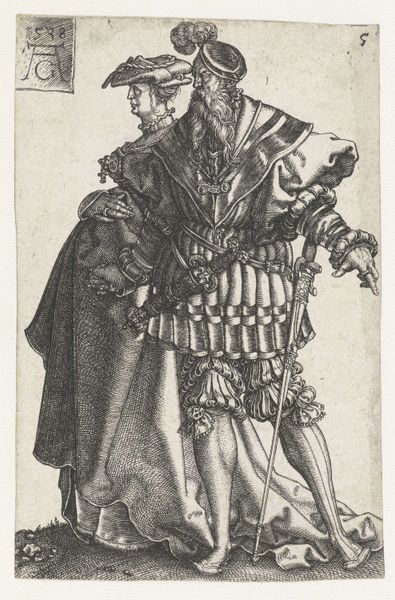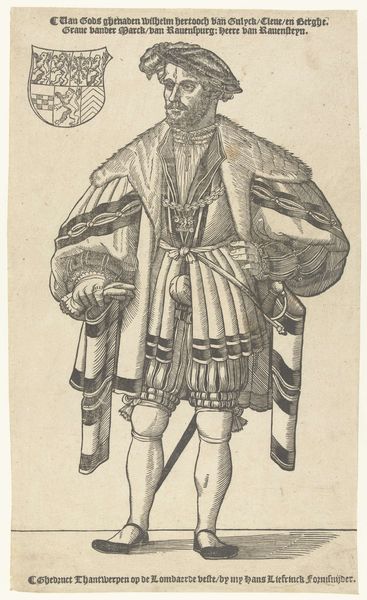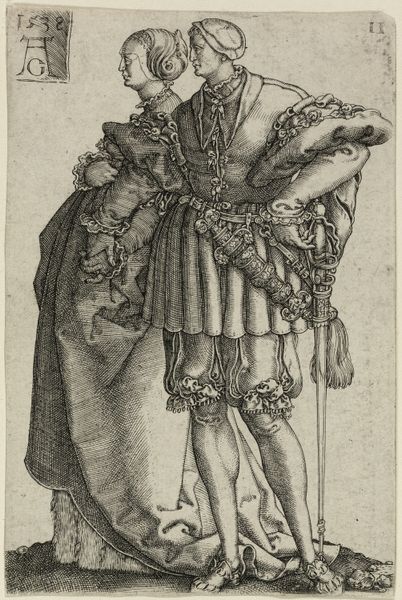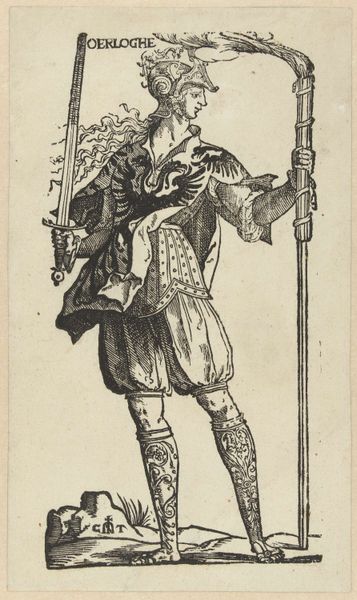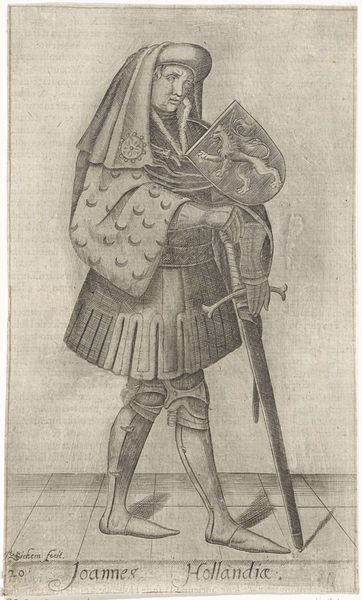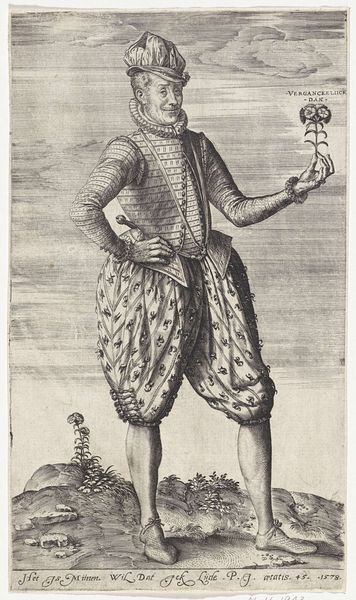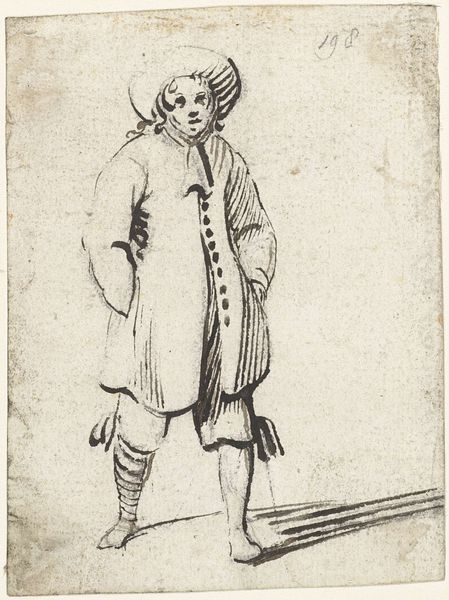
drawing, print, woodcut, engraving
#
portrait
#
drawing
# print
#
woodcut
#
northern-renaissance
#
engraving
Dimensions: image: 32.4 x 21.2 cm (12 3/4 x 8 3/8 in.)
Copyright: National Gallery of Art: CC0 1.0
Curator: Before us is "John William, Duke of Saxe-Coburg" attributed to Lucas Cranach the Younger. It’s rendered in a woodcut and engraving technique, offering a stark, detailed portrait. Editor: What strikes me immediately is the sheer visual weight of the Duke's attire. The intricate layers and textures seem to dominate the composition, almost dwarfing the subject himself. There's a real density of form. Curator: Exactly! Think about the labor involved: from the cultivation of the materials to the weaving, tailoring, and embellishment of the garments. Each fold, each puff, speaks to the intense economic and social systems at play. And, of course, the labor of the printmaker. Editor: Absolutely, and the technique reinforces that. The strong contrast between light and shadow, achieved through the engraving and woodcut, accentuates the dimensionality and tactile quality of those textiles. Note the subtle gradations that suggests volume and depth. Curator: We must remember prints such as this played a vital role in circulating images of power and prestige. It acted as early form of propaganda and played its role in displaying this ruler’s authority. Editor: It also shows a self-awareness on the part of the artist. The visual language conveys power, status, and a specific identity within a rigid social framework. This image speaks to the values of composition that define the subject’s essence and place in the world. Curator: And, to the economics behind production and distribution, impacting workshops, trade networks and, ultimately, contributing to our understanding of art’s interaction within that framework. Editor: Considering its lines, mass and volumes and how this artwork presents a system to extract information—it shows how a formal design makes art accessible through close looking. Curator: Through examining social status and materiality, however, we understand it from a place of social conditions as a material product with great impacts. Editor: Perhaps this shows there is a point in the process of appreciating art for both sides. Curator: Agreed; whether it’s from understanding visual structure or by decoding its creation, it brings meaning to life.
Comments
No comments
Be the first to comment and join the conversation on the ultimate creative platform.

